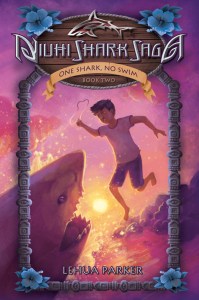 It started this summer, when we visited Boston. We had just been to Henry Wadsworth Longfellow’s house in Cambridge. We were relaxing on the Harvard University lawn, and, inspired by the uber-intellectual environment, I asked my then eight year old to read me one of Longfellow’s poems from the slim volume we had just bought. I half- way thought she would refuse. But she good-humoredly began to read The Children’s Hour, delighting in Longfellow’s description of his own daughters:
It started this summer, when we visited Boston. We had just been to Henry Wadsworth Longfellow’s house in Cambridge. We were relaxing on the Harvard University lawn, and, inspired by the uber-intellectual environment, I asked my then eight year old to read me one of Longfellow’s poems from the slim volume we had just bought. I half- way thought she would refuse. But she good-humoredly began to read The Children’s Hour, delighting in Longfellow’s description of his own daughters:
And for the last number of months, my now nine and eleven year old have indeed taken me by surprise with their enthusiasm for our daily poetry study. On the way to school, I ask them each to read me a poem of their choice from a collection of famous poems we keep in the car. What has surprised me is how much more their enthusiasm is for these poems than Shel Silverstein or the other ‘children’s poetry’ we have in the house. There is something about the ‘big topics’ addressed — love, death, yearning, freedom, God — that fascinates them. So too does the vulnerability of these long-ago adult poets appeal; although they don’t say it, I hear the amazement in their voices when they read the stanzas aloud. (And I imagine their inner dialogue: Adults feel scared or confused like we do? Adults that long ago were so inspired by love and beauty?) For instance, the courage and perseverance of the speaker in William Ernest Henley’s Invictus seems to speak to my son, who comes back to this poem again and again on our morning read-alouds,
Out of the night that covers me,
Black as the pit from pole to pole,
I thank whatever gods may be
For my unconquerable soul.
It makes sense. After all, a primary developmental task of the middle grader is defining of the self in relation to the environment. And what older elementary schooler/middle schooler wouldn’t be inspired by the majestic inner strength of the lines
It matters not how strait the gate,
How charged with punishments the scroll,
I am the master of my fate:
I am the captain of my soul.
His love for this poem have allowed us to discuss Nelson Mandela, who — or so the movie says — recited this poem to himself during his many years of captivity in South Africa. We discuss how an idea, an image, can give someone strength to endure the apparently unendurable. We discuss the power, and comfort, of words.
For my more whimsical daughter, William Wordsworth’s Daffodils seems to hold particular resonance. So much so that she’s been heard now reciting the lines to herself all around the house:
I wandered lonely as a cloud
That floats on high o’er vales and hills,
When all at once I saw a crowd,
A host, of golden daffodils;
Like Invictus, the ultimate message of the poem is about building – and relying upon – one’s inner resources. A message utterly appropriate to a young person who is relatively powerless in this world so defined by adults:
For oft, when on my couch I lie
In vacant or in pensive mood,
They flash upon that inward eye
Which is the bliss of solitude;
And then my heart with pleasure fills,
And dances with the daffodils.
What I’ve grown to realize is that like Wordsworth’s speaker, who stores the memory of the dancing flowers in his inner eye, these poems have the potential to be sources of inner strength for middle grade readers. There is no need to solely limit our young people to literature or poetry ‘meant’ for them. Rather, short exposure to small jewels of literary power (and most poems are by definition relatively short!) allow them to store these riches in their inner coffers for later spending. The great poets, like modern day rock or pop lyricists, appeal directly to the romantic spirits of young people.
Some of the words may be unfamiliar, some of the usages arcane, but without the cynicism that comes with teenage and adult years, middle grade readers have souls made for poetry. Like Emily Dickinson’s speaker in Chartless, they need no charts to navigate these poetic waters:
I never saw a moor,
I never saw the sea;
Yet now I know how the heather looks,
And what a wave must be.
So too do middle grade readers know great poetry in their bones. They may not have heard it before, but need no maps, just an enthusiastic parent, and permission to dive in.
And so, along with evening read-alouds, poetry study has become a part of our family culture. Sometimes it’s as simple as two short poems read aloud in the car on the way to school. Sometimes, when we’re pressed for time at night, I will read one or two poems in lieu of a bedtime story (or have the children chose and read a poem). If nothing else, hearing these great works recited in my children’s voices fills me with joy, and reminds me how important poetry is for spirits both young and old.
Are their particular poems you share, or plan to share, with the middle grade readers in your life?
(image of Henry Wadsworth Longfellow’s daughters courtesy wikipedia)





